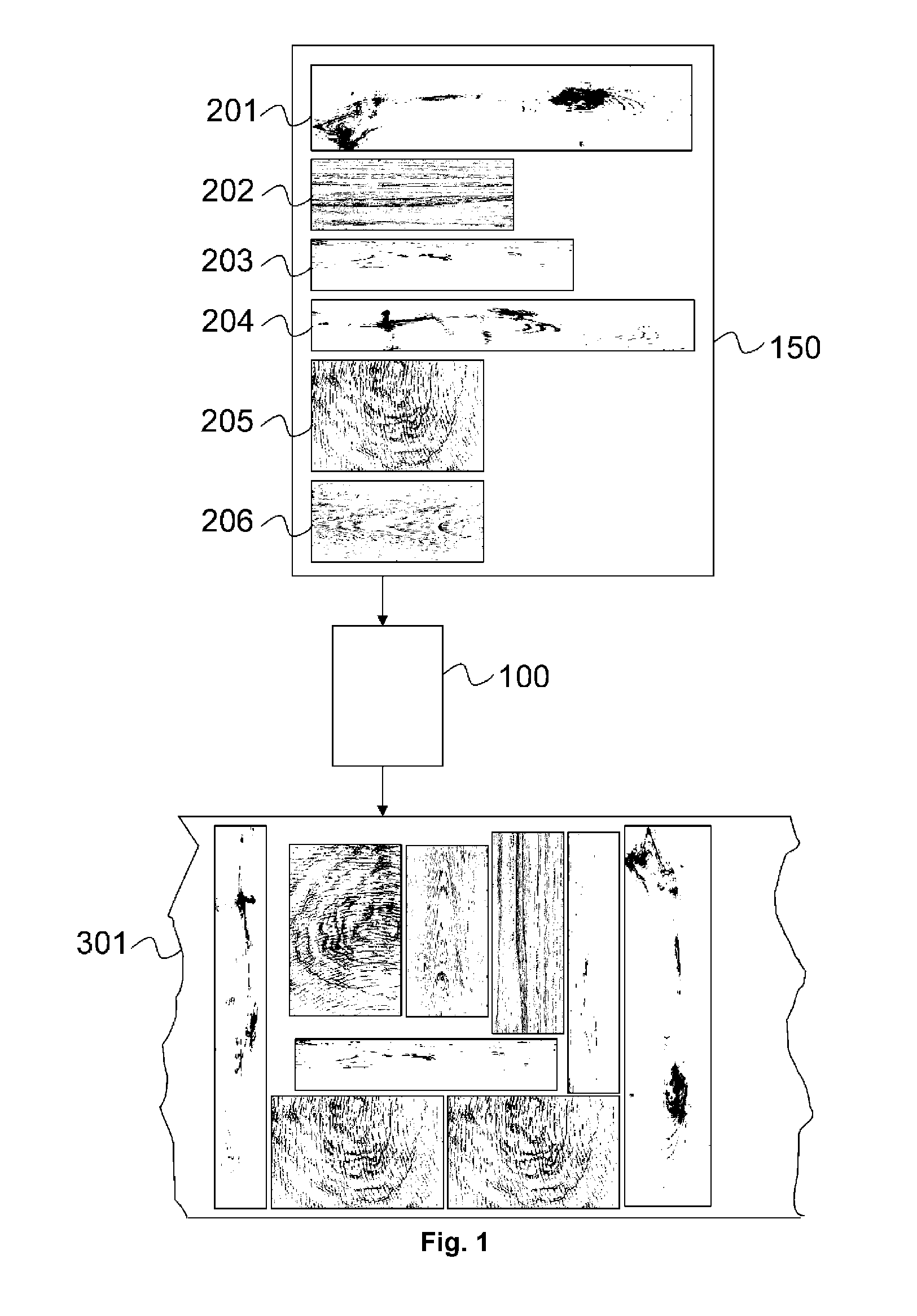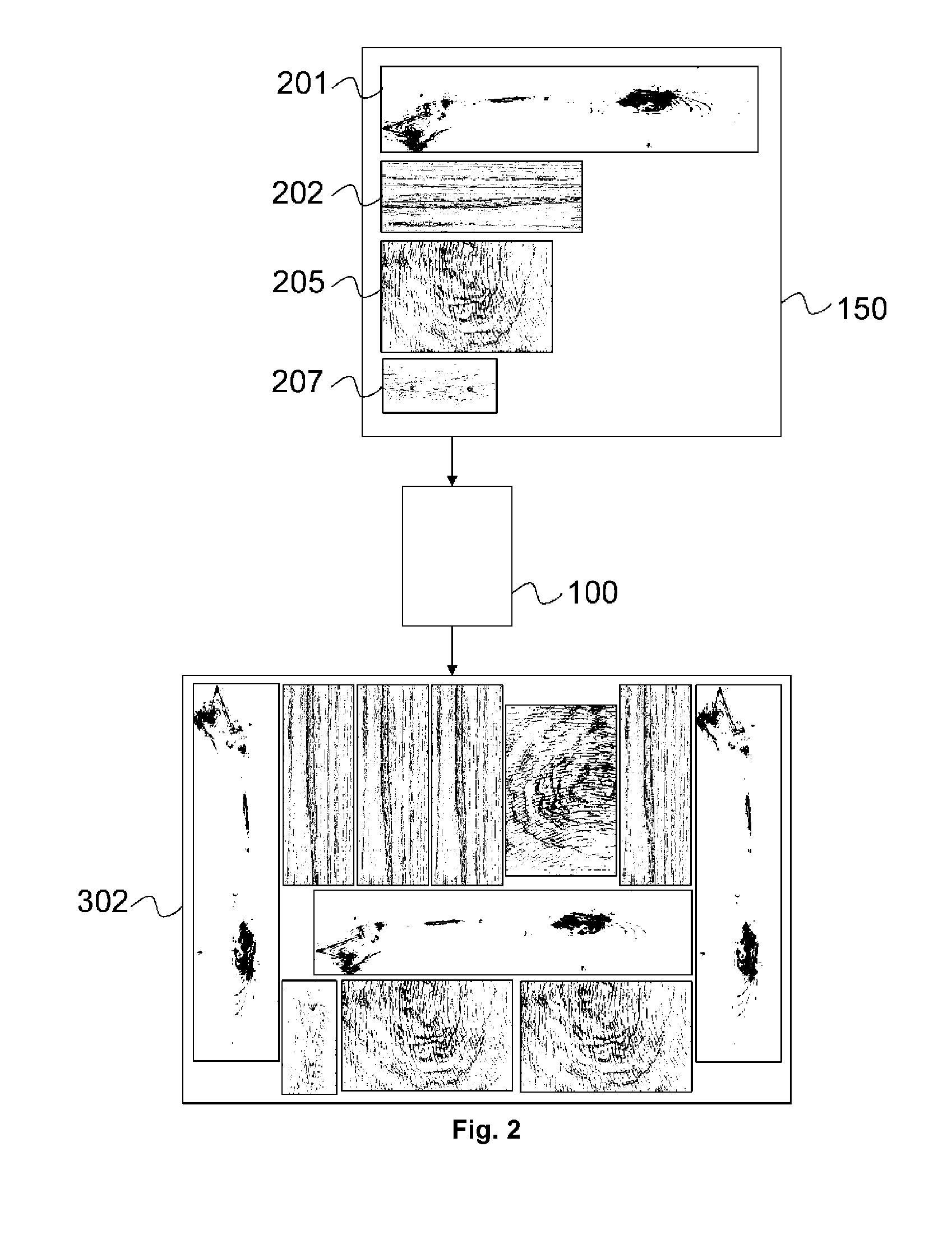Manufacturing of decorative workpieces by inkjet
a technology of inkjet printing and workpieces, applied in the field of manufacturing decorative workpieces, can solve the problems of increasing waste, not a solution, and increasing waste of decorative workpieces, and achieve the effects of quick response on specific situations, ability to react quickly, and manufacturing can continue fas
- Summary
- Abstract
- Description
- Claims
- Application Information
AI Technical Summary
Benefits of technology
Problems solved by technology
Method used
Image
Examples
Embodiment Construction
Content Extension Area
[0043]To compensate inaccuracies in the printing process and / or finishing process and / or provide extension to a decorative pattern to mount a decorative workpiece, in, for example three-dimensional object content, extension areas have to be designed in a decorative pattern before finishing the decorative workpiece.
[0044]Examples of content extension areas are:[0045]glue area: an area that will be glued afterwards while mounting the decorative workpieces to a finished product;[0046]connect area: an area to provide means that will be attached while mounting the decorative workpieces to a finished product. An example of such means is a tongue-and-groove profile on a decorative workpiece;[0047]folding area: an area that will be folded and / or attached while mounting the print to a finished product. For example flaps that are needed to fold a flexible decorative workpiece, such as a vinyl tile to a box or around stair;[0048]bleed area: Several finishing processes are...
PUM
 Login to View More
Login to View More Abstract
Description
Claims
Application Information
 Login to View More
Login to View More - R&D
- Intellectual Property
- Life Sciences
- Materials
- Tech Scout
- Unparalleled Data Quality
- Higher Quality Content
- 60% Fewer Hallucinations
Browse by: Latest US Patents, China's latest patents, Technical Efficacy Thesaurus, Application Domain, Technology Topic, Popular Technical Reports.
© 2025 PatSnap. All rights reserved.Legal|Privacy policy|Modern Slavery Act Transparency Statement|Sitemap|About US| Contact US: help@patsnap.com



